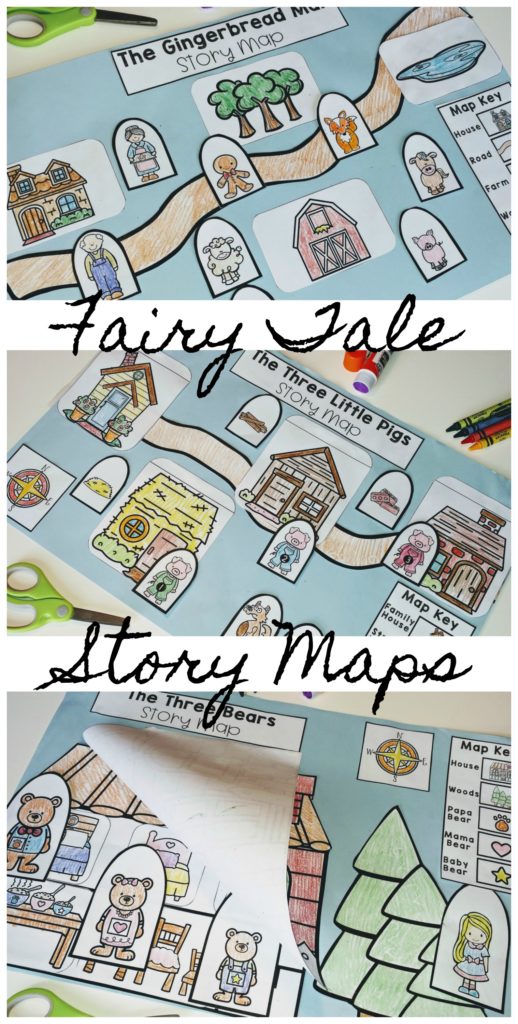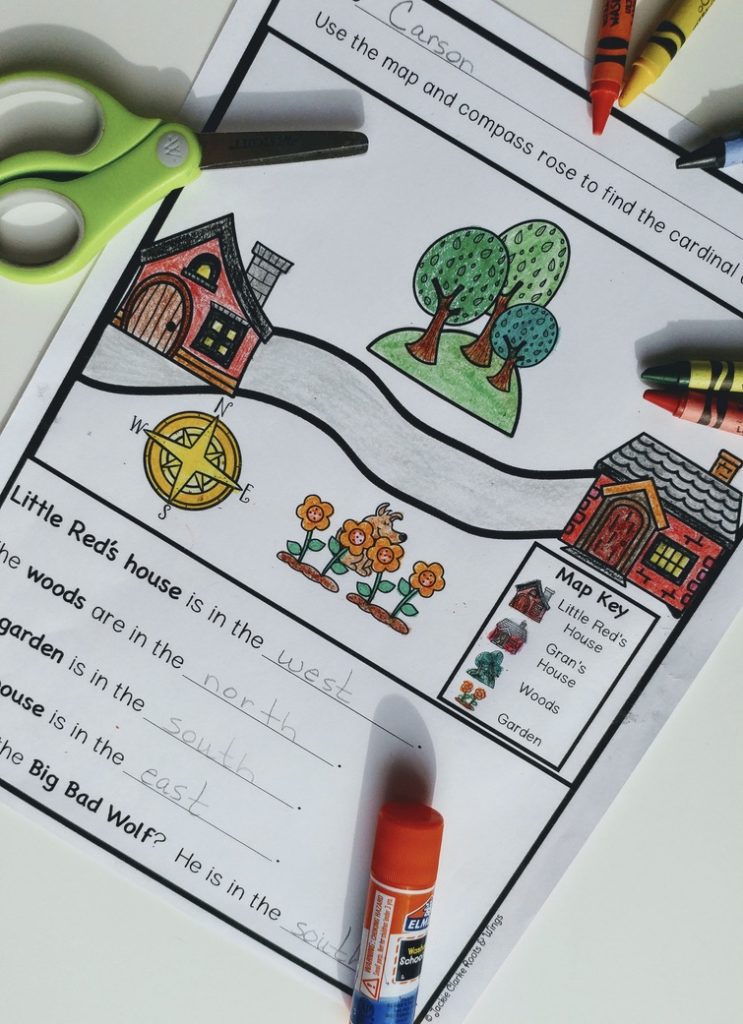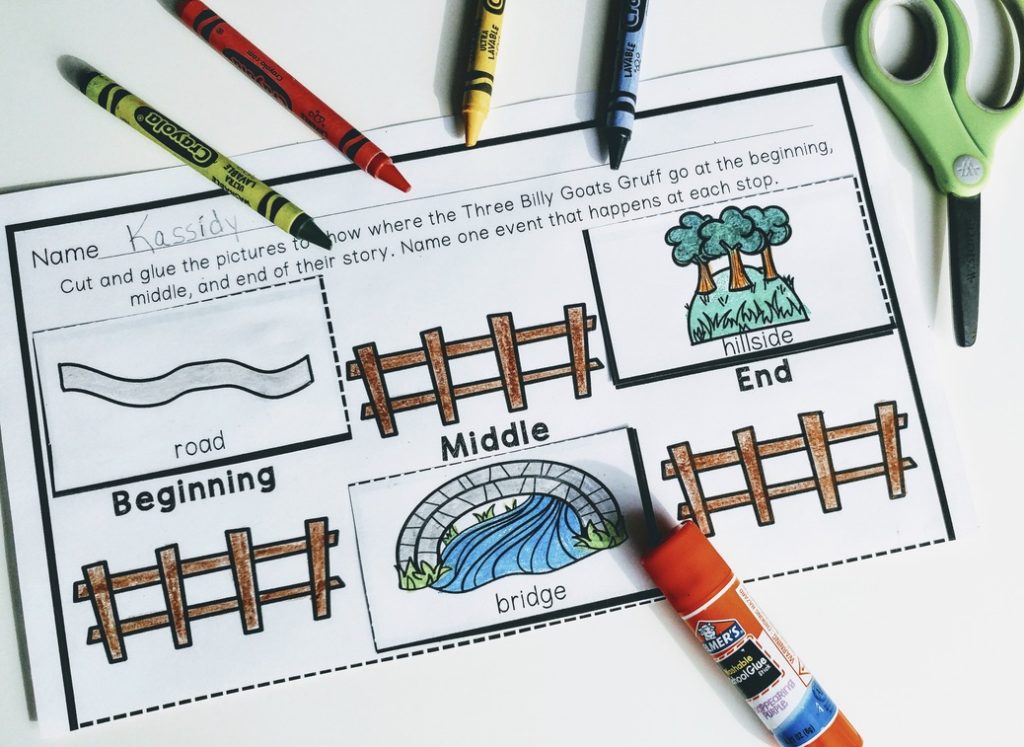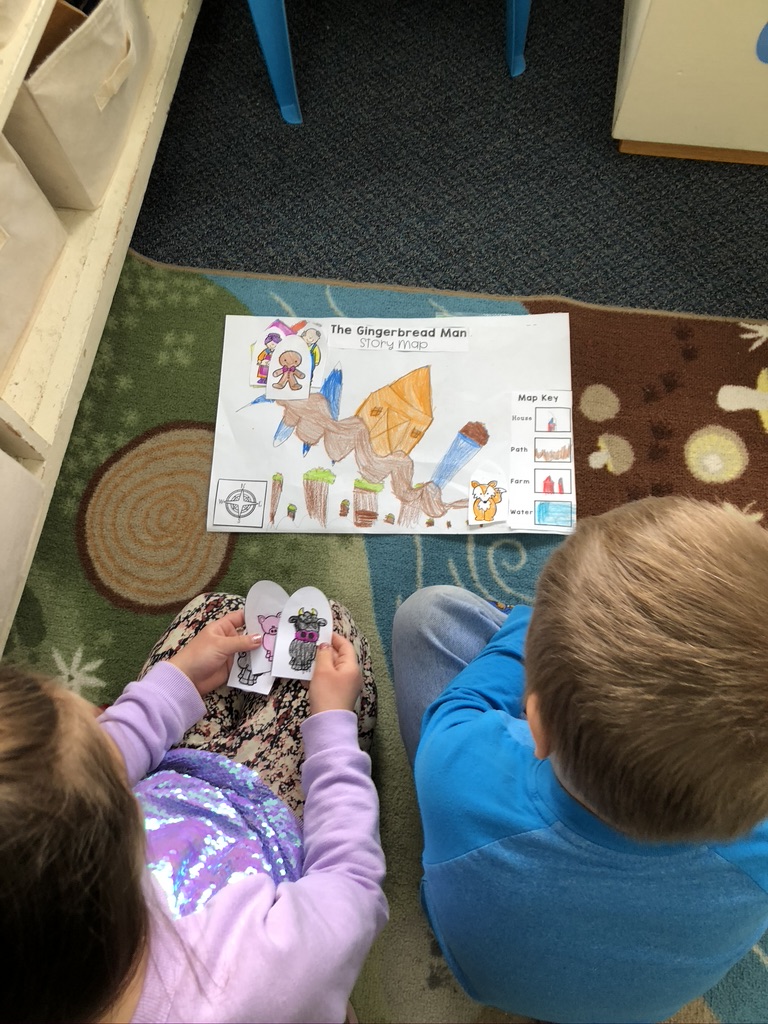Teaching With Fairy Tales
If I had my way, a fairy tale unit would be an essential part of every kindergarten teacher’s curriculum. These age-old stories are highly engaging and full of teaching opportunities that include building oral language, expanding vocabulary and increasing comprehension. They are also my go-to favorites for teaching the story elements of character and setting and exploring the text structure of beginning, middle, and end. In this post, I share one of my favorite activities to do within a fairy tale unit, which is to create story maps around these tales.
Story Maps Reveal the Parts of a Story
To create these story maps, we first pull apart the fairy tale to get to know the pieces well and then put it back together as we build the map and retell the story to families. This take-apart and build again process supports children in learning how stories work. It also aids them in writing, as the text structures expose the underlying framework of a story and teach children how to organize their own ideas as they begin to write.
Story Maps Link Literacy & Social Studies
I also use these story maps to teach map skills, which are included in our kindergarten social studies curriculum. By adding a map key and a compass rose, children can learn about symbols and cardinal directions.
And this Atlas of Fairy Tales by Claudia Bordin is a great book to share as you explore fairy tales and map making with your kiddos.
Create Story Maps
Here are the steps I take in creating these maps with my kindergartners.
Step 1: Explore the Setting
Begin by reading and rereading your chosen fairy tale. You might read the same version or several different versions or a combination of both. Look closely at the setting and explore how it changes over the course of the book. Ask children to tell you where the characters are at the beginning, middle, and end of the story. Discuss when the story takes place. Is it day or night? Is it summer or winter?
Step 2: Explore Story Structure
Explore the story structure of the fairy tale and look for patterns in the events or text. For example, The Three Bears follow a “rule of 3,” which is common in fairy tales (i.e. three bowls, three chairs, three beds). Other examples include, three tries before a solution or three magic wishes. Language may also take the form of a repeated pattern, such as, “Run, run as fast as you can, you can’t catch me I’m the Gingerbread Man.”
Step 3: Create a Story Map Key
Create a list of the different places or “landmarks” the characters go in the story. Draw symbols for each place and include them on a map key.
Step 4: Build the Story Map
Model how to draw these landmarks in sequence from beginning to middle to end across the sheet of an 11 x 18 sheet of paper. Or, color and cut out pictures included in each Fairy Tale Story Map resource. Attach the map key and a compass rose.
Step 5: Add the Characters
Invite children to draw or color and cut out the characters. Staple a baggie or envelope to the back of the story map to hold these items.
Step 6: Teach Map Skills
Teach children about the 4 cardinal directions. Use the maps they’ve created to practice following directions. Ask, “Which landmark do you find in the East?” or “In which direction is the brick house?”
Step 7: Practice Retelling
Pair children up and invite them to practice retelling their fairy tale to a partner using the story map. Remind them to use their “story voices” to sound like each character. Children can then take their map home and retell the story to family members.
Add Story Maps to Centers
Set up a Story Center in your classroom, where children can continue to enjoy retelling fairy tales as well as other stories that you are reading together. Include props that you have made, bought or gathered and create story baskets or boxes for each tale.
At the center, provide materials for children to make Story Maps around the fairy tales they have come to know and love.
In my classroom, this center is a big part of our reading block and is a joyful way for children to enjoy stories repeatedly, while building oral language and vocabulary and strengthening comprehension skills.
Story Maker Mats are also another great option for your Story Center. Each represents a different text structure that children can use to retell familiar stories or create new ones.
For more ideas on retelling, reading, and literacy, visit the Growing Readers page inside the Roots & Wings Resource Library.
This post contains affiliate links. Roots & Wings is a participant in the Amazon Services LLC Associates Program, an affiliate advertising program designed to provide a means for sites to earn advertising fees by advertising and linking to Amazon.com.











 Curious Classroom Book Study: Begin the Day with Soft Starts
Curious Classroom Book Study: Begin the Day with Soft Starts The Positivity Project: A Schoolwide Approach to SEL
The Positivity Project: A Schoolwide Approach to SEL Gingerbread STEM Challenge: The Toy Boat Project
Gingerbread STEM Challenge: The Toy Boat Project Planning Virtual Field Trips for Distance Learning
Planning Virtual Field Trips for Distance Learning
I absolutely love this!
I’m so glad. It’s one of my favorite yearly activities to do with my kinders.
I love the 3d Three bears story scene! Where did you find that??
Here is the link to the Three Bears Story Maps https://www.teacherspayteachers.com/Product/Fairy-Tale-Story-Maps-The-Three-Bears-story-elements-and-map-skills-5120470